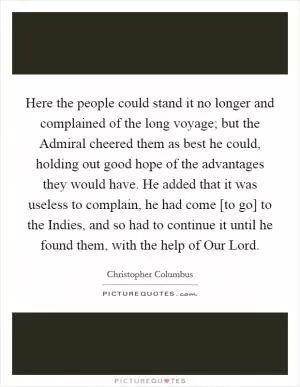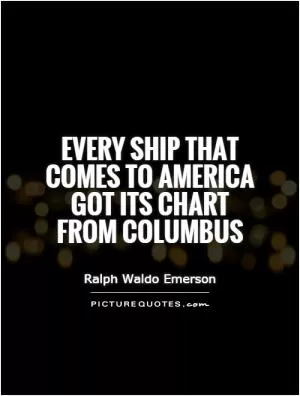Following the light of the sun, we left the Old World

Following the light of the sun, we left the Old World
Christopher Columbus is often credited with discovering the New World in 1492, but his journey was not without its challenges. In his own words, Columbus described his voyage as "following the light of the sun, we left the Old World." This statement is a powerful reflection of his determination and courage in the face of uncertainty and danger.Columbus was a visionary explorer who believed that he could reach Asia by sailing west from Europe. Despite facing skepticism and opposition from many of his contemporaries, he was undeterred in his quest to find a new route to the riches of the East. His famous voyage across the Atlantic Ocean was a bold and daring undertaking that forever changed the course of history.
When Columbus set sail from Spain in August 1492, he embarked on a journey into the unknown. He and his crew faced numerous challenges, including treacherous seas, unpredictable weather, and the constant threat of mutiny. Despite these obstacles, Columbus remained steadfast in his belief that he would reach his destination.
As he sailed westward, Columbus relied on the guidance of the sun to navigate his way across the vast expanse of the ocean. The sun was his constant companion, providing him with direction and light in the darkness. In his own words, Columbus described the sun as a beacon of hope and inspiration that guided him towards his ultimate goal.
After weeks at sea, Columbus and his crew finally caught sight of land on October 12, 1492. They had reached the shores of the New World, a place that would forever change the course of history. Columbus's discovery of the Americas opened up a new era of exploration and colonization, leading to the eventual establishment of European empires in the Western Hemisphere.












 Friendship Quotes
Friendship Quotes Love Quotes
Love Quotes Life Quotes
Life Quotes Funny Quotes
Funny Quotes Motivational Quotes
Motivational Quotes Inspirational Quotes
Inspirational Quotes